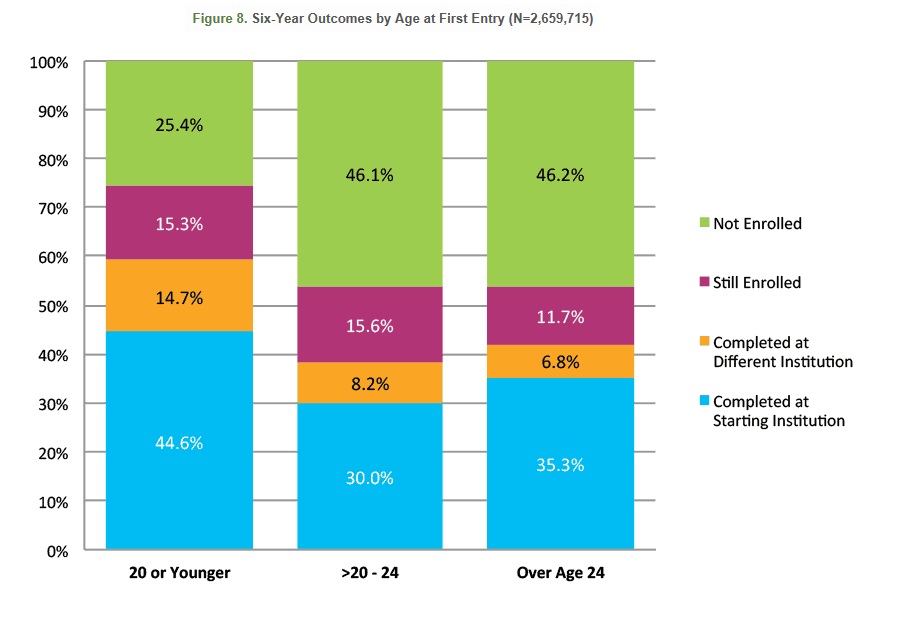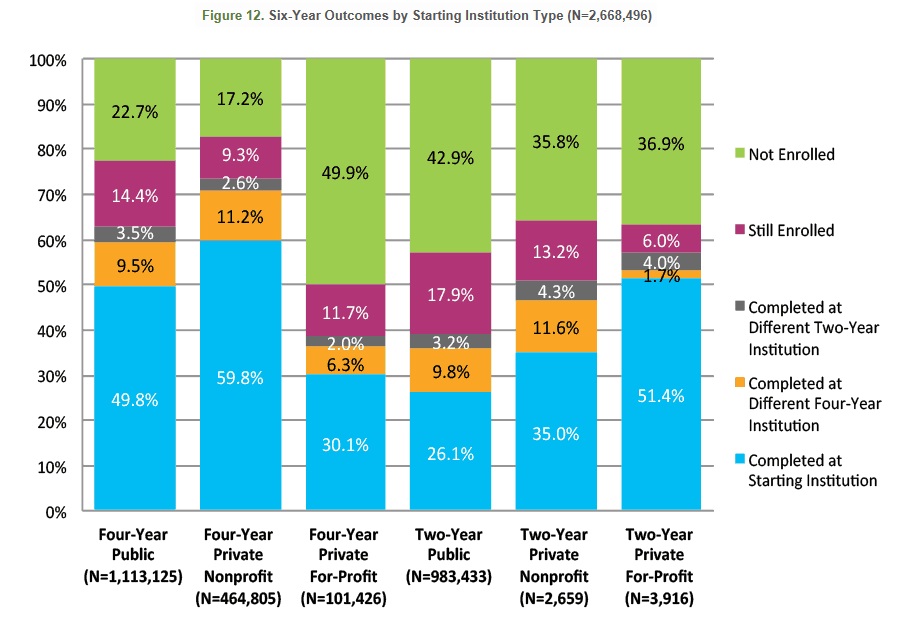You have /5 articles left.
Sign up for a free account or log in.
More first-time students enrolled in college in 2008, as the recession was beginning, than in previous years. But a smaller percentage of this group made it to graduation, according to new data the National Student Clearinghouse Research Center released today.
The study draws from a database that tracks 96 percent of the nation’s total enrollment. It is the third annual installment of completion data from the nonprofit center, and the first look at six-year graduation rates for students who entered higher education as the economy soured.
Graduation Rates on "This Week"
Doug Shapiro, executive research director of the National Student Clearinghouse, will discuss these new findings Friday on "This Week," Inside Higher Ed's free weekly news podcast. Sign up here for notification of new "This Week" podcasts.
The number of incoming, credential-seeking students in 2008 grew to 2.7 million from 2.4 million, an increase of 12 percent. And the number of first-time students who were at least 21 years old increased by 20 percent.
That influx isn’t surprising, as economic downturns typically drive enrollment booms.
“The prospect of a degree as a buffer against hard times was top of mind for many who found themselves newly unemployed,” according to the report.
Yet at the same time, higher education was buffeted by budget problems that led to tuition increases. And the researchers note that the national college completion push, which President Obama and foundations have led, has also been part of the backdrop in recent years.
Until now researchers have lacked broad, long-term data on the recession’s effects on college completion rates. And the new numbers from the Clearinghouse feature several advantages, including the ability to follow students as they transfer and move across state lines.
The news is not encouraging, and follows an earlier center report showing a decline in student persistence. The latest study found that 55 percent of students who first enrolled in 2008 earned a degree or certificate by this fall, down from 56.1 percent for students who arrived in 2007. The percentage of students who were still enrolled and working toward a credential (14.7 percent) was also down one percentage point compared to the previous group.
Students who were at least three years out of high school contributed disproportionately to the drop-off in college completion. The rate was down 2.6 percentage points for students who were between 21 and 24 years old when they enrolled and 1.4 percentage points for those who were over 24.
Likewise, rates slid 0.7 percentage points for students who first enrolled at community colleges (to 39.1 percent). They were down more sharply at for-profits, with a 3.9-percentage-point decline at four-year for-profits (to 38.4 percent). Fully half of first-time students who enrolled at four-year for-profits in 2008 have dropped out without earning a credential, according to the study.
In comparison, completion rates were essentially flat for those who first enrolled at four-year publics (62.8 percent) and up slightly for students who started at four-year nonprofit colleges (73.6 percent).
The study also found, however, that community colleges and for-profits had the biggest recession-driven enrollment increases. For example, the number of incoming, first-time students at four-year for-profits jumped by 35 percent in a single year, to 107,368.
“This suggests that many opted to enroll in four-year for-profit institutions only as a response to the deepening recession,” the report said. “Thus, the dramatic decline in completion rates could also be attributable to improving economic conditions later in these students’ education, which may have led some to leave school in order to re-enter the labor market.”
The smaller decline in community college completion rates likely is due to similar reasons, said Afet Dundar, an associate director at the center, who co-authored the report.
Overall, traditional-age students who enrolled full-time were just as likely to earn a credential in the 2008 incoming “class” as were students from the previous year. Yet because fewer students were able to attend college full-time, the study said, the overall completion rate for traditional-age students was down (0.5 percentage points).
Dundar said one of the report’s more alarming findings was a decline in completion rates at four-year institutions for students who first enrolled at community colleges. That number dropped a percentage point compared to the previous year (to 16.2 percent from 17.2 percent) despite efforts around the country to create smoother transfer pathways.
On the positive side, the study confirmed that more students eventually get to the finish line after eight years of working on a credential.
As a supplemental feature, the report tracked students who first enrolled in 2006. Within eight years, 44.4 percent of this group completed at their original institution, while 15.7 percent completed at another college. The combined rate of 60.1 percent is 6 percentage points better than the six-year rate, and 2 percentage points better than the seven-year one.
“The two additional years make a noticeable difference,” the report said.








